Thank you to Wave Petunias for partnering with me on this post.
I’m often asked a question that is perplexing to me: “Do you grow annuals or perennials?”
I don’t fault the people asking the question as I think there are some people who grow one or the other, and perhaps that was more typical in the past. But the best parts of my garden rely on the combination of annuals and perennials, not to mention, shrubs, trees, bulbs and even vegetables.
Annuals, with their season-long color and seemingly endless array of colors, are perfect for tucking around the garden to fill in a gap until another plant fills in or just generally brighten things up. And perhaps the best all-purpose annual is the petunia.
This year I have Easy Wave Petunias in containers as well as in the ground where they bring a much needed splash of color as other plants (ahem, dahlias) take their time getting around to blooming. Easy Wave Petunias bulk up quickly (in fact I mostly bought 2-inch plants sold in six-packs) and have a nice mounded habit that works well in containers but also fills those pesky holes in the landscape.
Easy Wave Petunias come in oodles of colors and I was feeling a strong monochromatic vibe this year. For one container I combined Lavender Sky Blue and Blue (which reads purple to me) with purple sage for a dark, textural vibe.
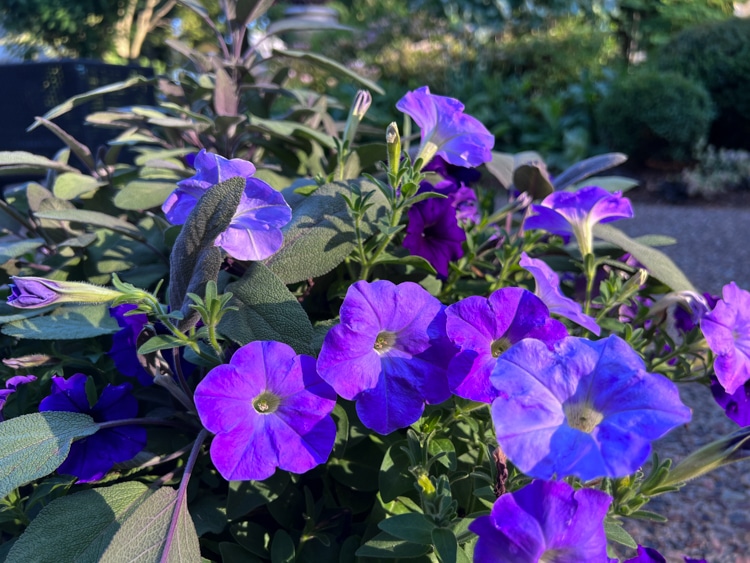
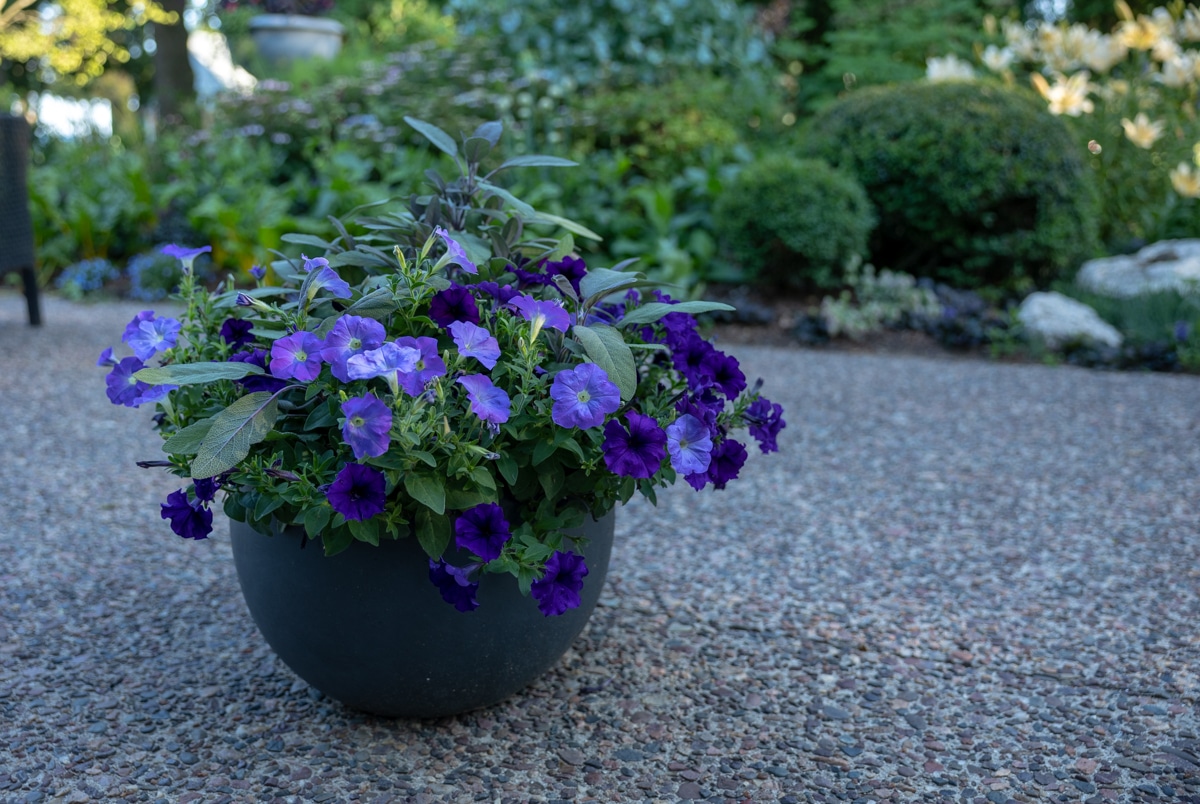
I used those same colors in a nearby bed right off the patio, bringing color to an area with dahlias and alliums, including the seedheads of Allium christophii.
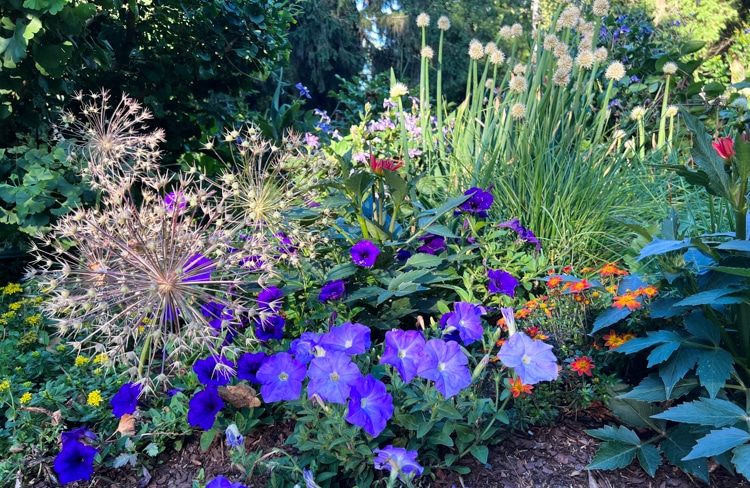
In the circle garden, where I like to mass plant in segments, I mixed together all the different pink Easy Wave Petunia colors I could find, from Rose Fusion to Plum Vein. A few surprises snuck in there, including a couple of reds and one white, but the overall look is pretty interesting, especially since different colors have slightly different sized flowers.
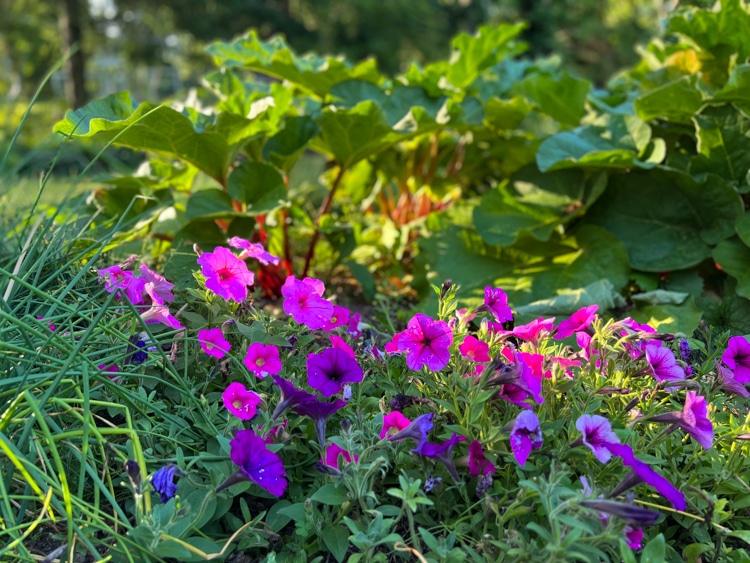
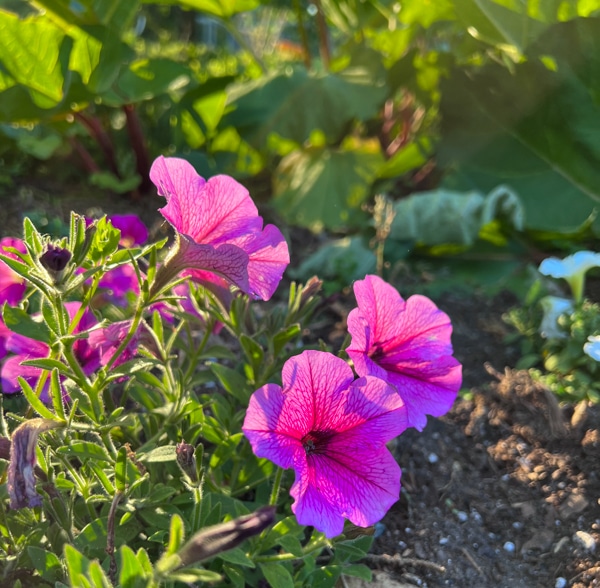
All of these are really just getting going. Easy Wave Petunias get about 6 to 12 inches high and can grow to more than 30 inches wide, so these will keep bulking up all summer.
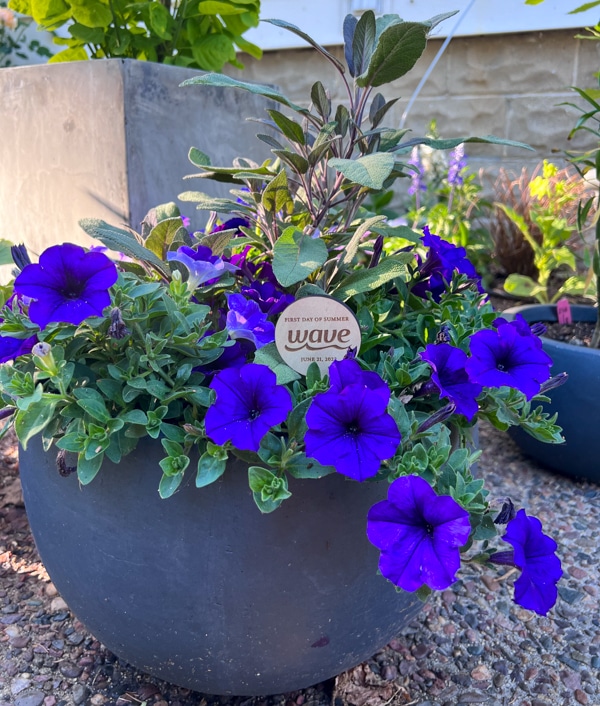
GROWING TIPS
Like all heavy-blooming annuals, Easy Wave petunias appreciate regular fertilizing. I fertilize my containers with a synthetic water-soluble fertilizer every week to 10 days starting in July. I like to keep things organic for my in-ground beds so I usually use a seaweed or fish fertilizer every couple weeks on those plants.
Petunias are also one of those plants that appreciates the occasional trim, so as soon as mine start getting a little leggy, I will cut them back by half (or even more sometimes).
Budworm can be an issue on petunias. I’ve only dealt with them once in my life, so I don’t do anything more than keep an eye on them when I’m watering, like I do with all my plants. An organic spray with BT can be used to control budworm.
Petunias will do best in full sun, but you can push them into part sun without a problem.
Petunias are a classic annual, perhaps the classic annual that have been popping up in and around my garden for years.
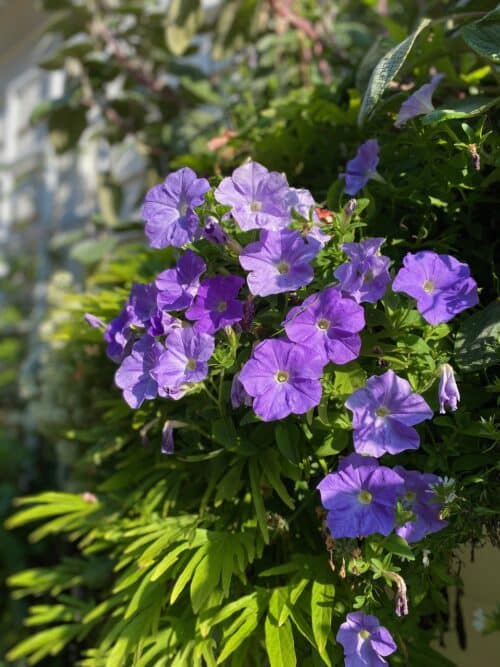
Easy Wave Petunias seem to nail that happy in between place of filling in well and holding up to other perennials in mixed containers and the ground without outcompeting its neighbors. It’s pretty much a perfect partner.


14 Responses
wow your website is very helpful . I am happy And I Trust your website .
I love how easy it is to navigate your website and find the information I need. From planting guides to pest control, everything is organized so well and easy to understand, which is fantastic.
“Watching a garden grow is like witnessing a miracle unfold before your eyes. With patience, dedication, and a little bit of love, you can cultivate a world of beauty and abundance right in your own backyard. So get your hands dirty, feel the sun on your face, and let nature work its magic. The rewards of gardening are truly priceless.”
Wonderful article. I love the fragrance of petunias
I live in an climate that is hot and dry during the summer. All of our plants are on a drip system. I sank 3 gallon pots in the soil so that the top of the pot is only 1 to 2 inches above the soil, and placed a tube from our drip system in the pot, and placed mulch around the perimeter so the pot won’t show. Every year I plant 3 small wave petunias in the pots, fertilize with long acting fertilizer, cut back leggy stems by half, and enjoy profuse blooms all summer.
I dig up a few of each of my petunias and winter them over inside. Take clipping in the late winter, use rooting hormone powder, and have started my own this year. From about five plants I wintered over to at least 25 in my garden. Didn’t have to buy not even one.
Good for you! That’s great and it’s wonderful to hear you’ve had such success.
I have zero annuals in my garden this year and boy do I miss them! I’ll have to keep these in mind for next year. Thanks!
Wonderful article. I love the fragrance of petunias, it reminds me of my grandmother’s garden. Love your color choices and would like to pin this article. How can I pin it?
I also use a lot of petunias in my garden. As they are so very easy to start from seed under lights, that means more money in the budget for other plants later in the season. I have found the Wave petunias larger bloom size to fit in better in certain areas, than PW Supertunias. Therefore, I use both in different ways.
P.S. Please make sure to do another “what went right” video this year, as they are very helpful to watch, and I usually learn of a new plant to try from your gardening tips. (Thanks to your suggestions,, I now grow: Purple Hyacinth Bean vine, green nicotiana, thalictrum, and wild ginger.)
Great article as always!!
In the third photo with the Allium christophii and the blue petunias what is the plant with the little red and yellow flower? A dahlia? Love it.
Erin, do you think that the Wave
Petunia grows as well as the PW Vista’s?
I second the question.